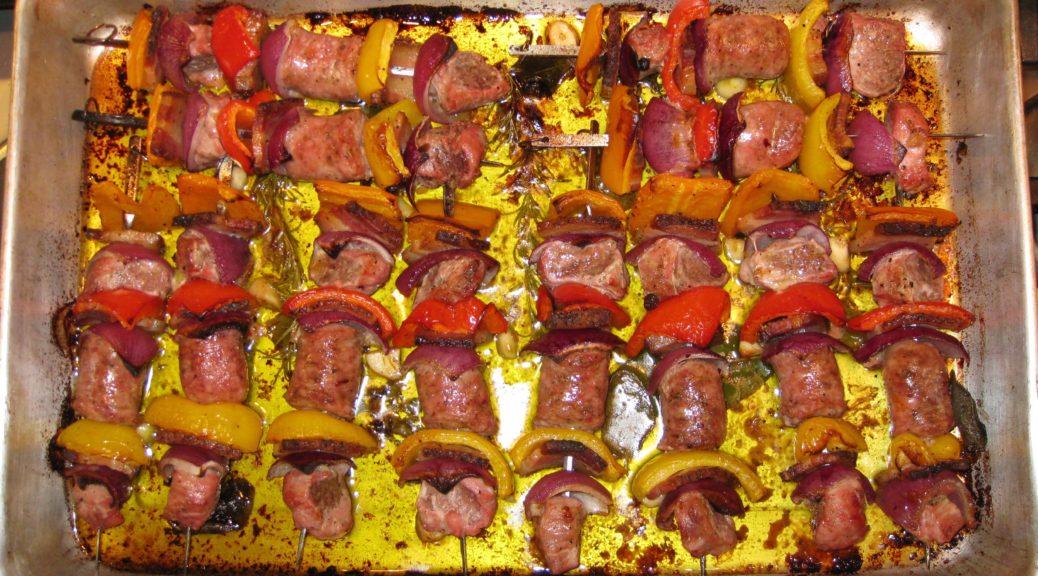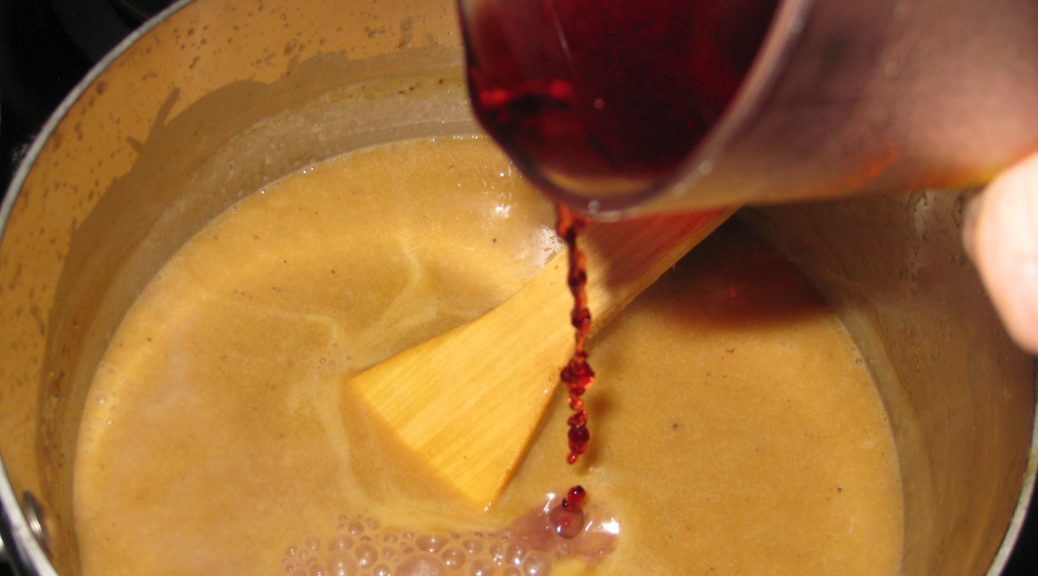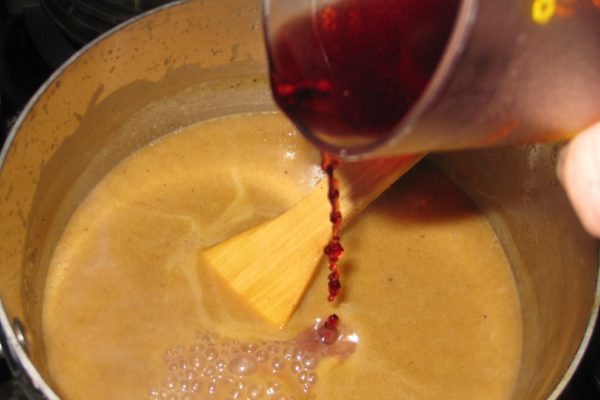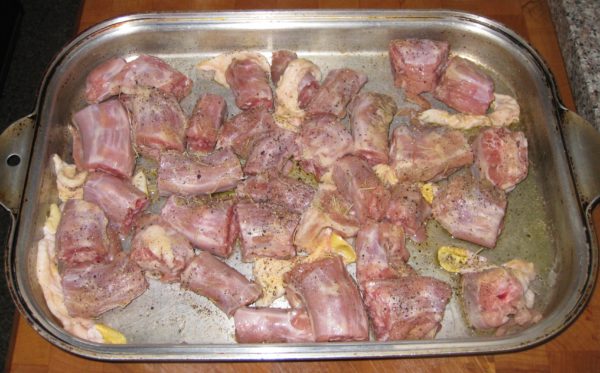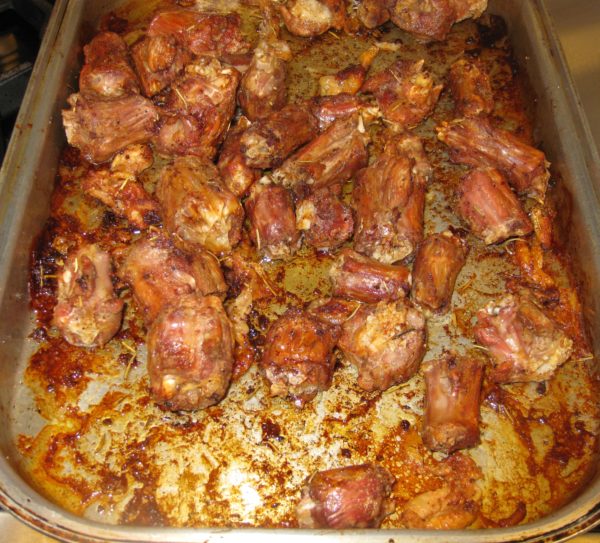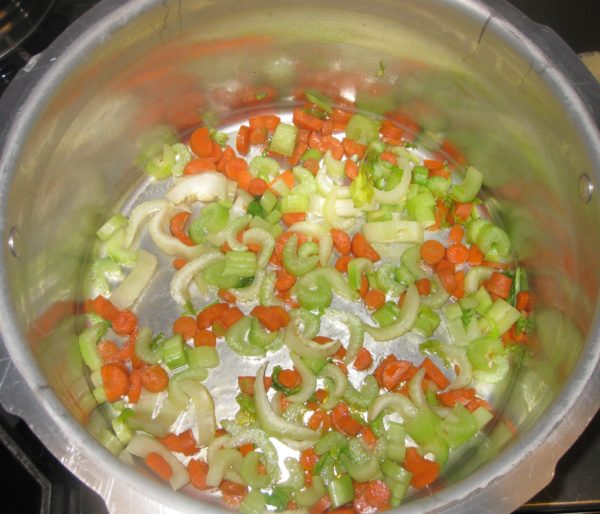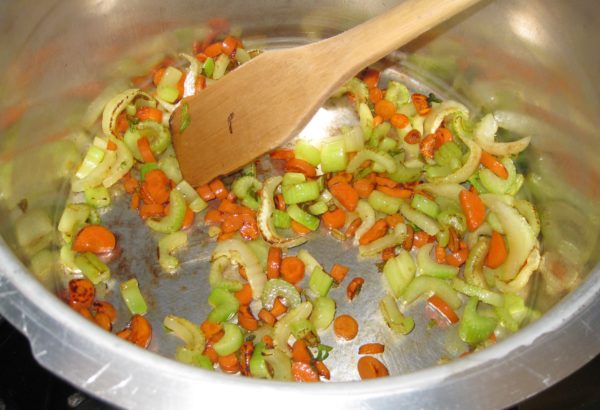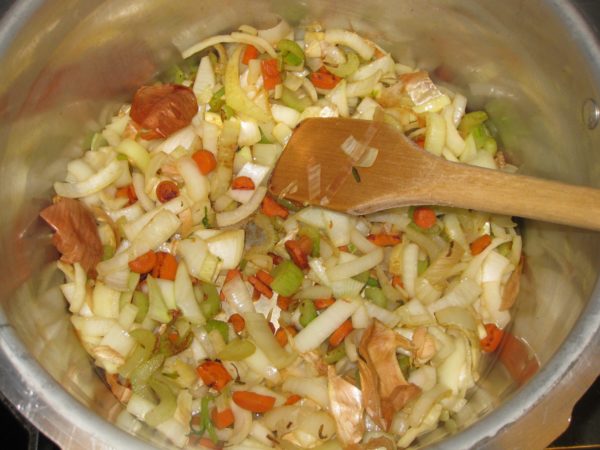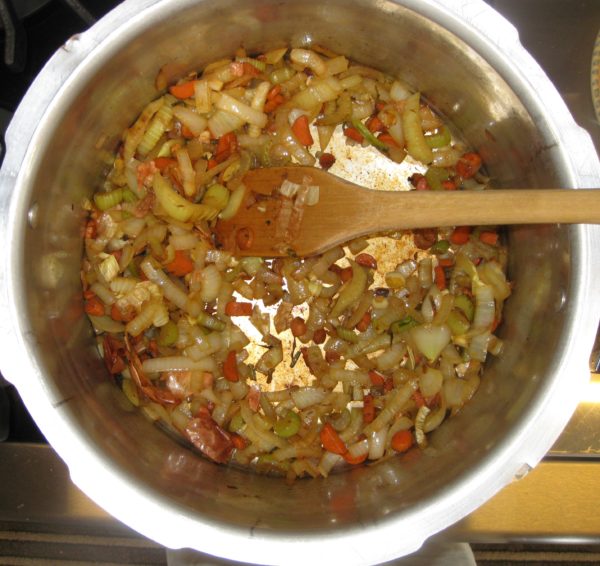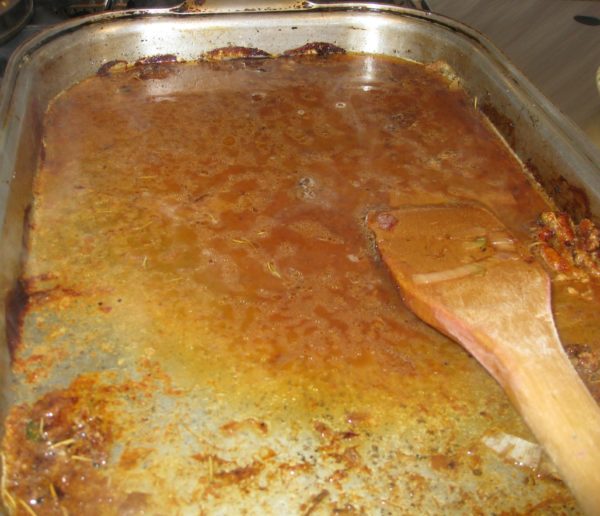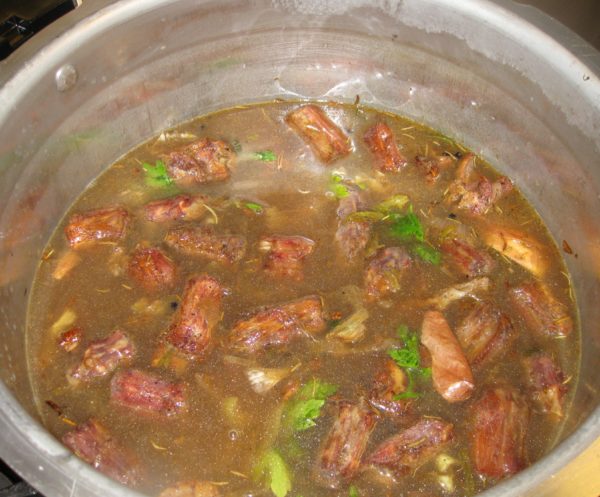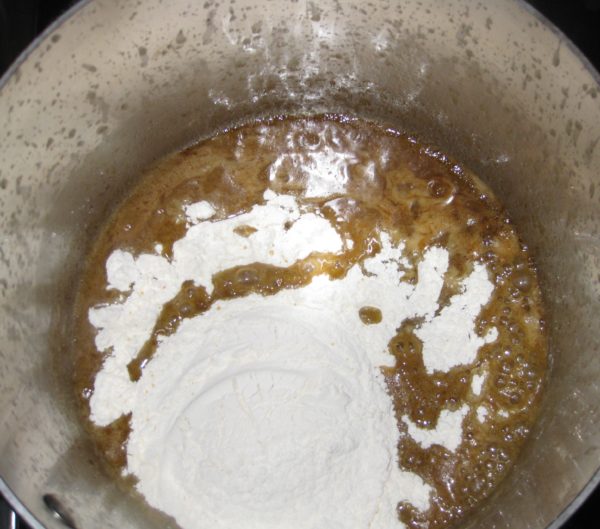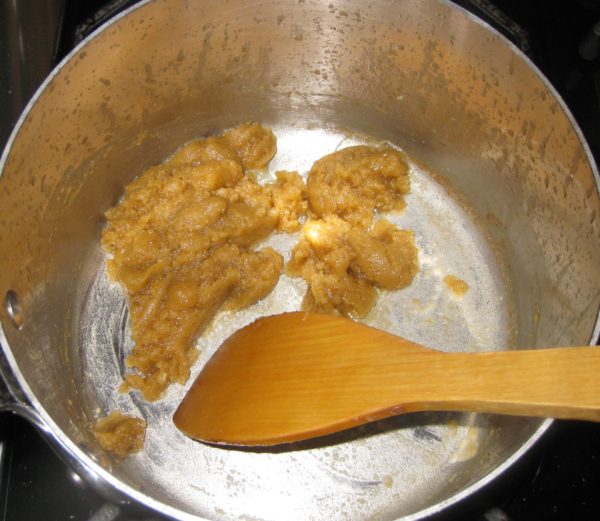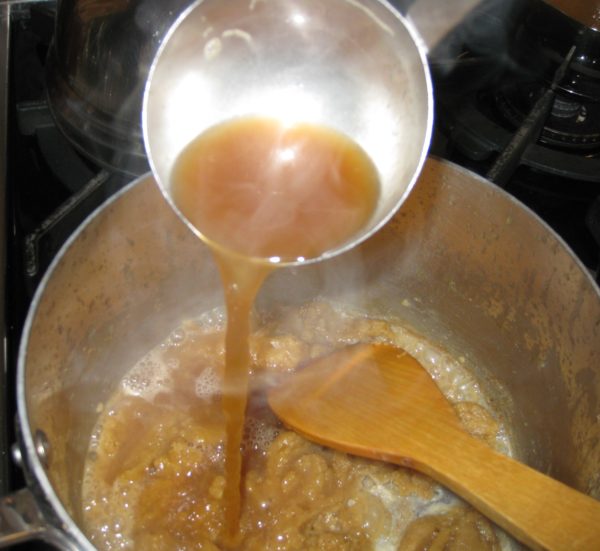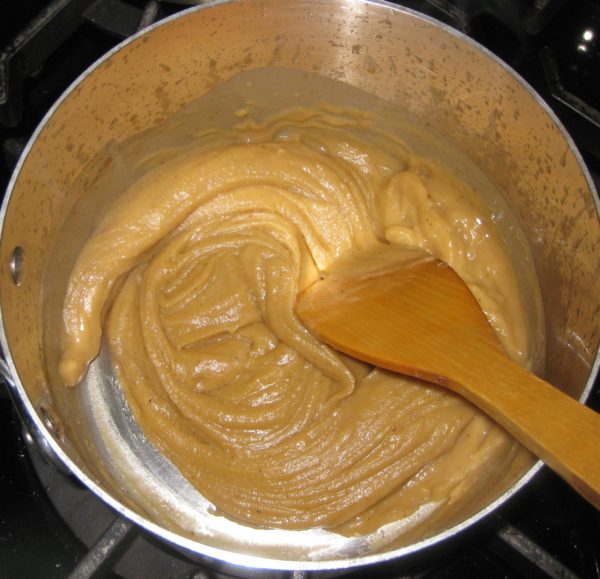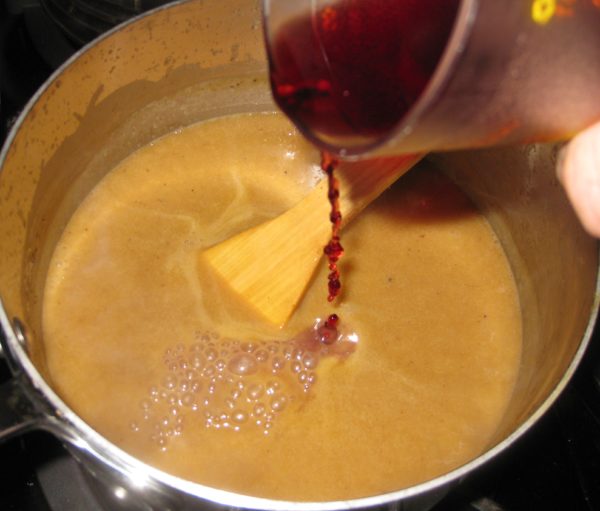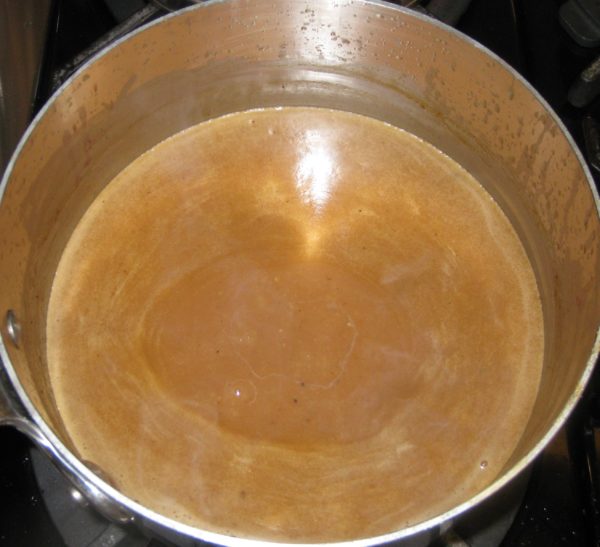November 20, 2019
Spiedini means skewers. By extension it also refers to food cooked on skewers.
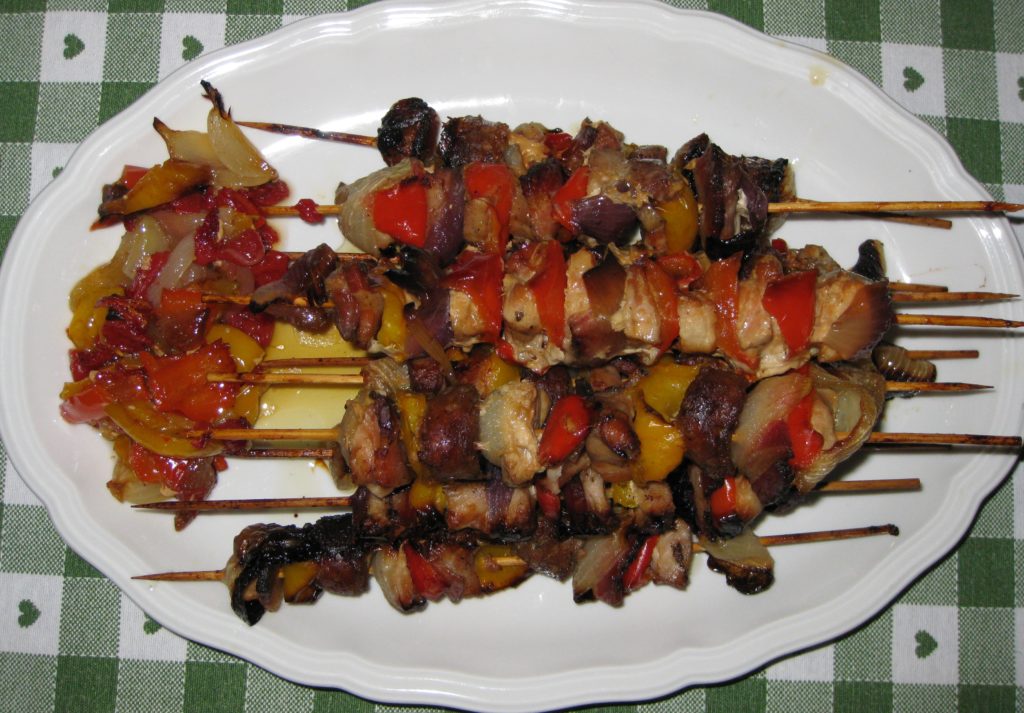
There is evidence that humans cooked food on skewers as far back as 300,000 years ago in an area that is encompassed by present-day Germany.
It’s an ancient cooking method. So, it’s not surprising that food cooked on skewers is found almost everywhere.
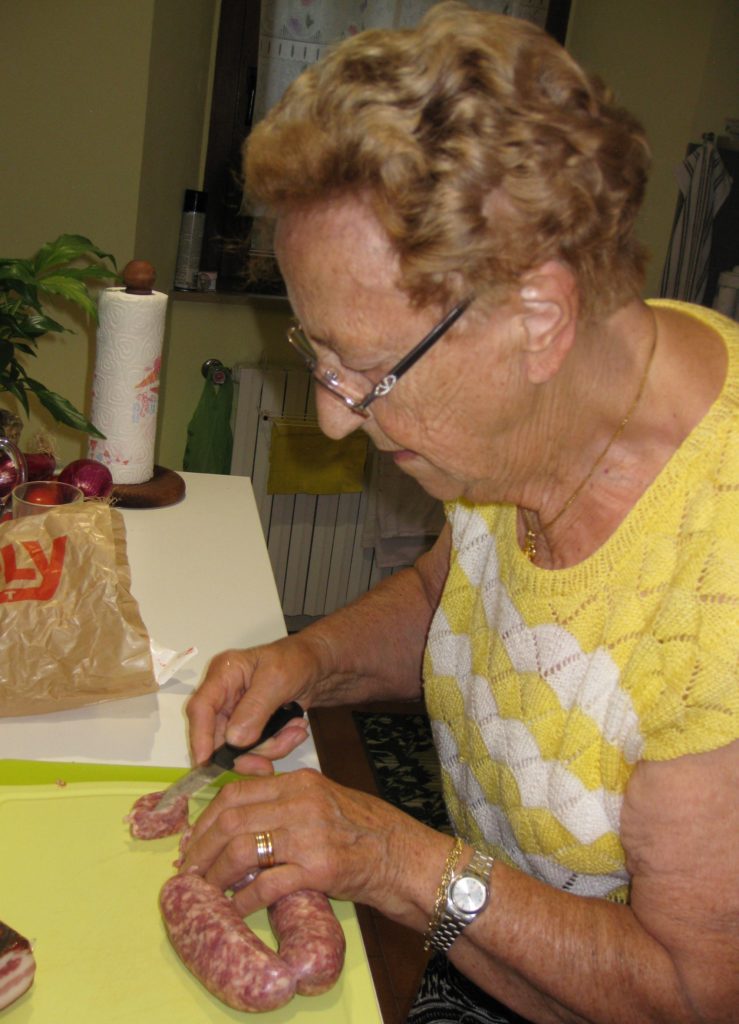
During my month of cooking in Tuscany with Zia Fidalma this past August, spiedini were on the lesson plan.
But first, there was the shopping. Onions and peppers came from the weekly market in Bagni di Lucca. Pork and sausage came from her favorite local butcher. Pancetta tesa came from yet another vendor. The pantry staples, including olive oil from her own olive grove, were on the ready at home.
Join our mailing list and you’ll never miss a recipe again!
The sausage that Zia Fidalma used is Salsiccia Toscana, Tuscan Sausage. It does NOT have fennel seed. What it DOES have appeared to be a mystery, at least temporarily.
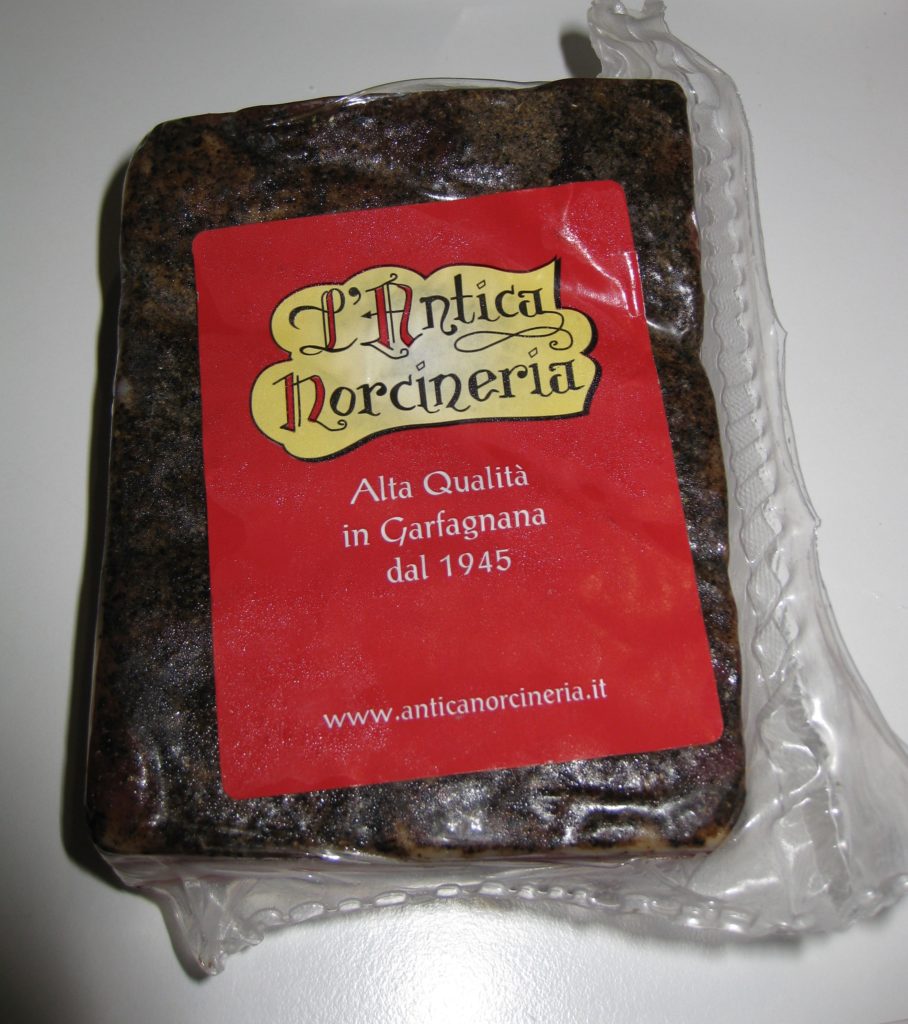
Butchers in Italy who make it say they don’t know because they buy the spice mix from a company. Whether or not this is completely true is also unknown, to me at least. Requests from friends and family in Tuscany also came up empty-handed.
A Google search, in Italian, turned up more useful information. As expected, there is a range of ingredients. Every recipe has salt and pepper. Most have garlic (minced, chopped, or in one recipe, rubbed on one’s hands before one mixes the sausage!). Many have a bit of wine, both white and red are called for. I found one recipe that indicated that finely minced sage could be added if desired but NOT fennel!
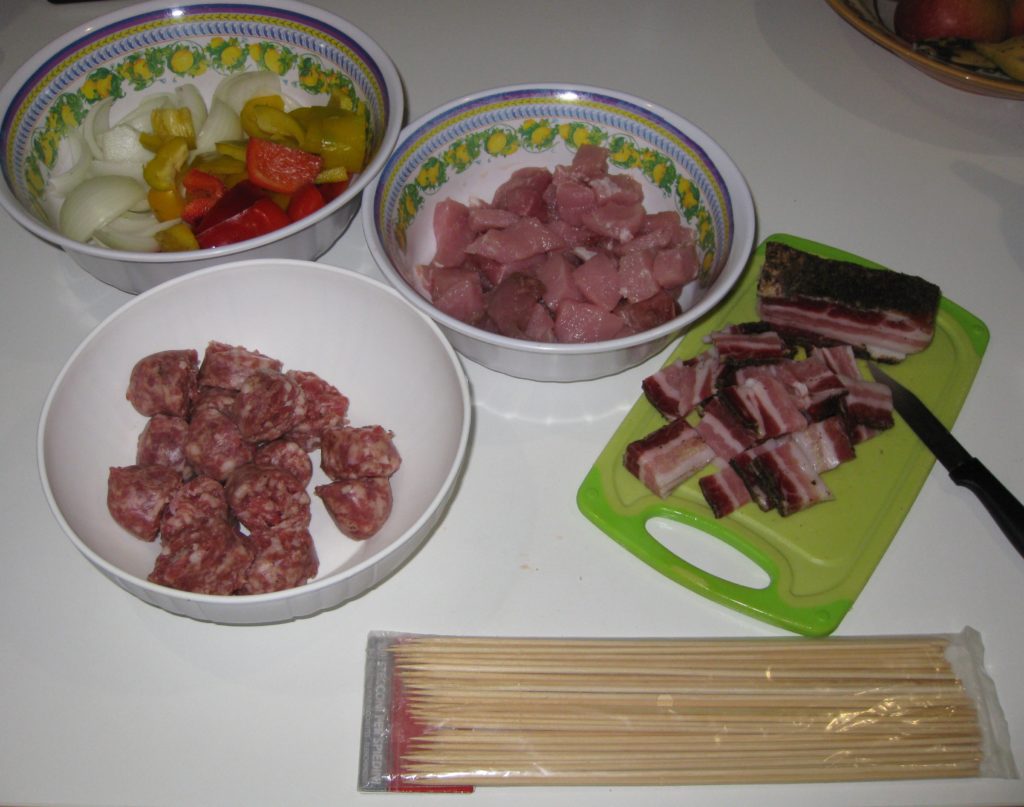
So, basically, Tuscan sausage is very sparingly flavored with salt, pepper, garlic and maybe a bit of wine.
For a traditional Tuscan taste for these spiedini, purchase (or make) an “Italian” sausage without fennel and without red pepper or paprika. (Note, there is no such thing as “Italian” sausage in Italy. Like most foods in Italy, sausage is hyper-local and varies from region to region, province to province, and often town to town.)
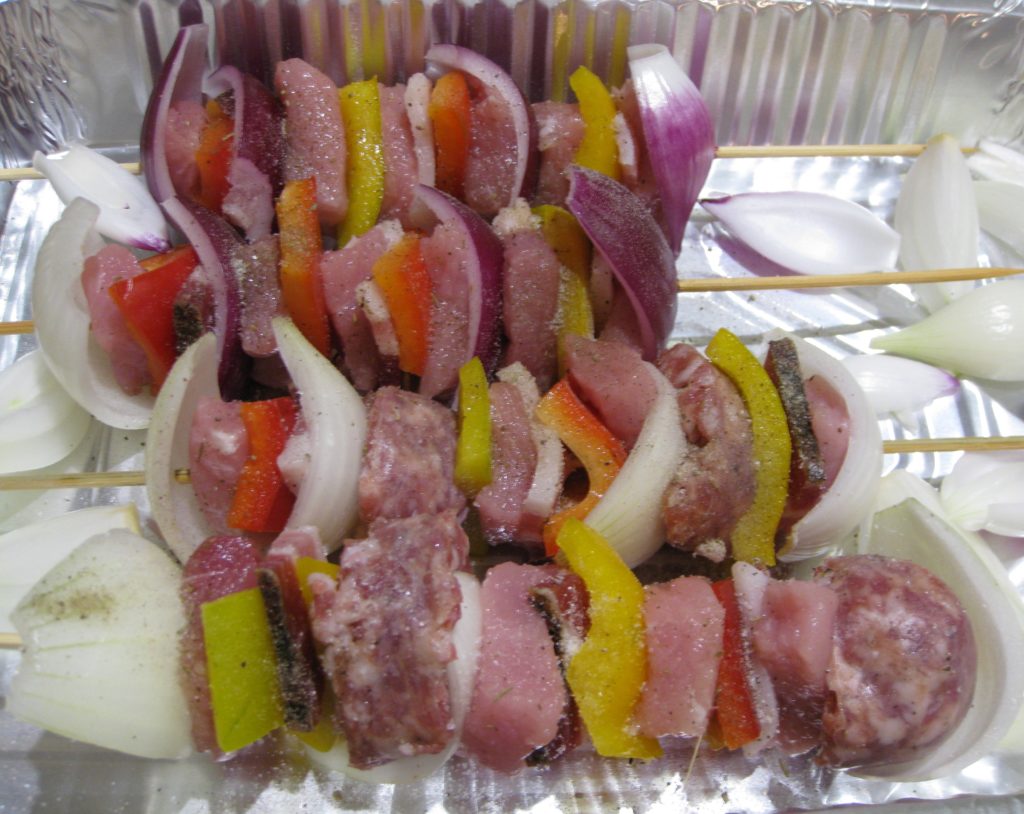
Nobody is going to complain, however, if you use sausage with fennel seed as I had to do when I was unable to find sausage without fennel after trying four markets in Santa Fe.
Follow us on your social media platform of choice
![]()
![]()
![]()
Pancetta tesa (sometimes called pancetta stesa) may be more difficult to find than the correct sausage, however. Pancetta tesa is flat, not rolled. It is better to use for spiedini because it is easier to cut into shapes that facilitate skewering.
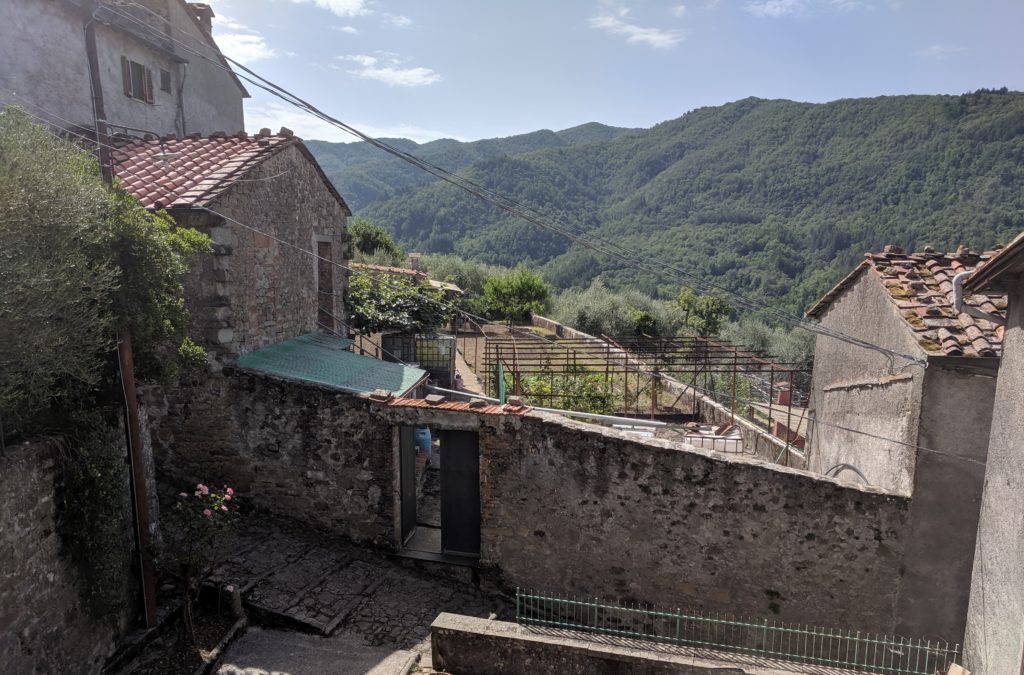
While you might spend 30 to 45 minutes cutting up the meat and vegetables and threading them on a skewer, the cooking process is easy. Feel free to experiment with the herbs, but I’ve called for the herbs that are most commonly used in Tuscan cooking.
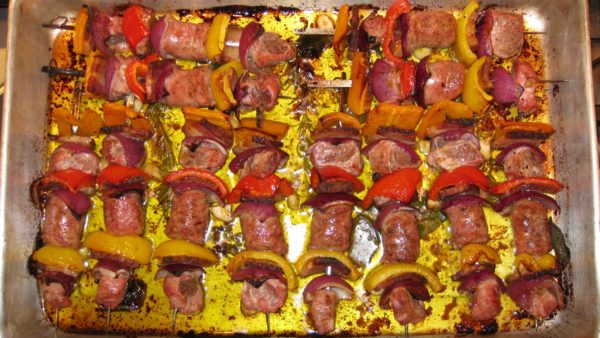
| Prep Time | 45 minutes |
| Cook Time | 30 minutes |
| Servings |
people
|
- 3 links Tuscan-style sausage without fennel approximately 12 ounces
- 1 pound lean pork such as tenderloin or another cut that can be cooked quickly
- 36 pieces pancetta tesa approximately 1” x 1” x 3/16”
- 3 large bell peppers yellow and/or red and/or orange (not green)
- 1 large red onion
- 3 sprigs fresh rosemary
- 8-9 fresh sage leaves
- 2 fresh bay leaves
- 5-6 juniper berries lightly crushed
- 2-3 sprigs oregano or marjoram or thyme
- 5-6 cloves garlic very coarsely chopped
- 1/2 cup extra virgin olive oil approximately
- salt
- Freshly ground black pepper
Ingredients
|

|
- Cut each link of sausage into four pieces.
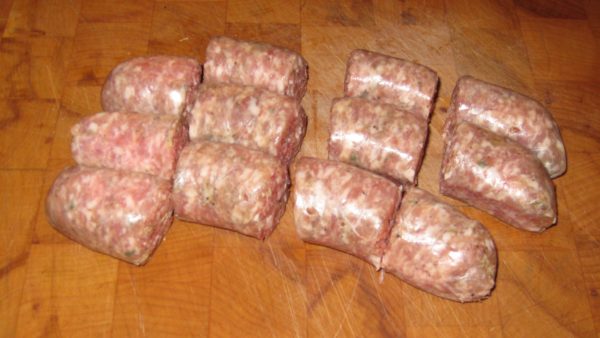
- Cut the pork into 24 pieces.
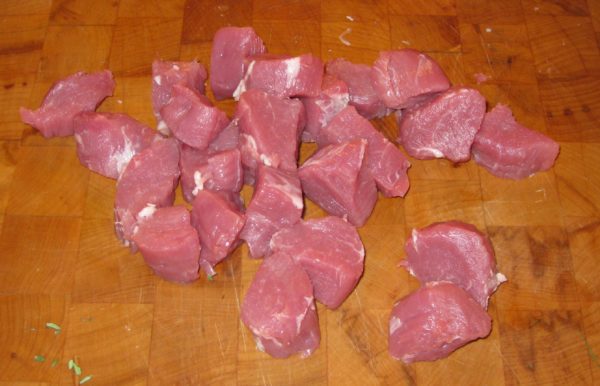
- Cut the pancetta tesa into 36 pieces
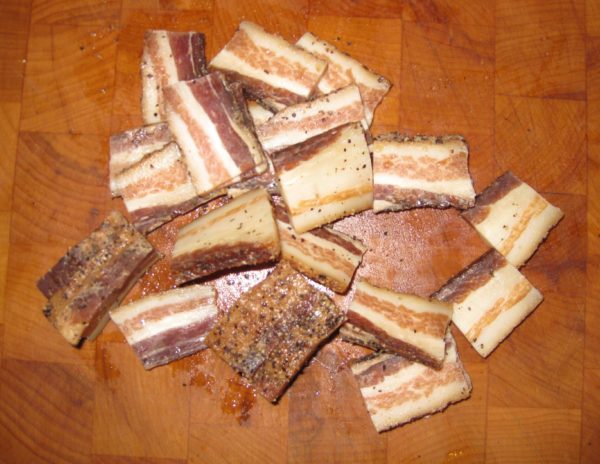
- Cut each pepper into 12 pieces.
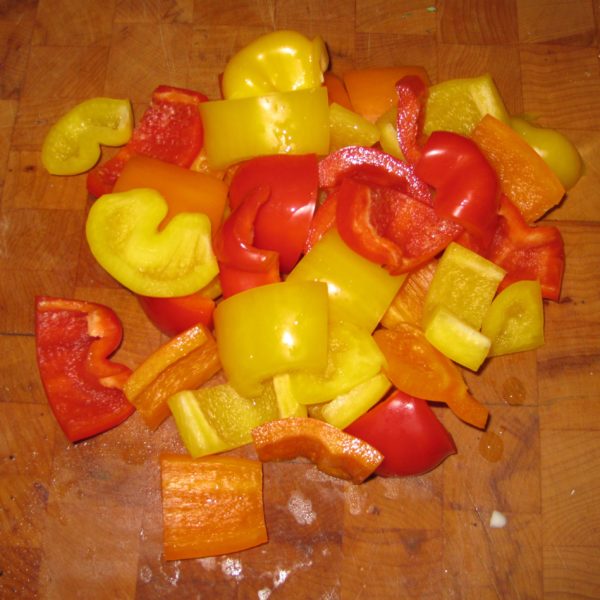
- Separate the onion into layers and cut 36 pieces of onion about the same size as the pepper pieces
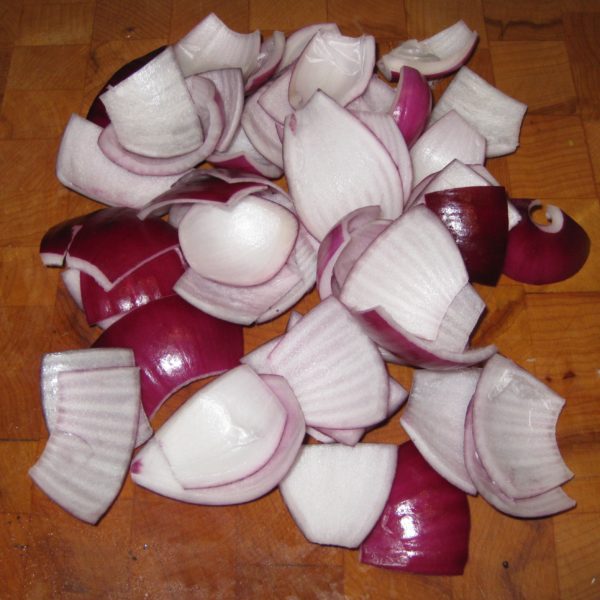
- Thread the meat and vegetables onto 12 skewers in the following order: Pepper, Pancetta, Onion, Pork, Pepper, Pancetta, Onion, Sausage, Pepper, Pancetta, Onion, Pork.
- On the bottom of a shallow roasting pan large enough to hold the skewers in a single layer, put the rosemary, sage, bay leaves, oregano, juniper berries and garlic.
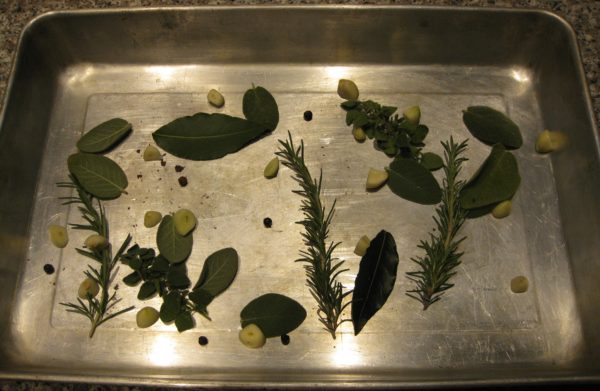
- Put the skewers on top. Season generously with salt and pepper. Drizzle with olive oil.
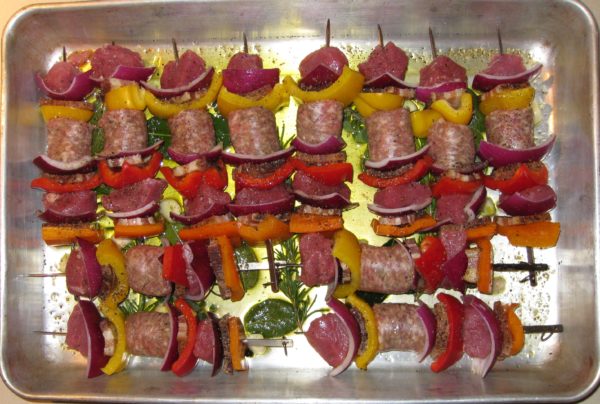
- Roast at 400°F until the meat is cooked, approximately 20 to 30 minutes, basting occasionally with the oil from the pan.

- Arrange the skewers on a serving platter. Pour the oil over top being sure to add the cooked herbs and garlic. Serve immediately.
Copyright © 2019 by Villa Sentieri, LLC. All rights reserved.

